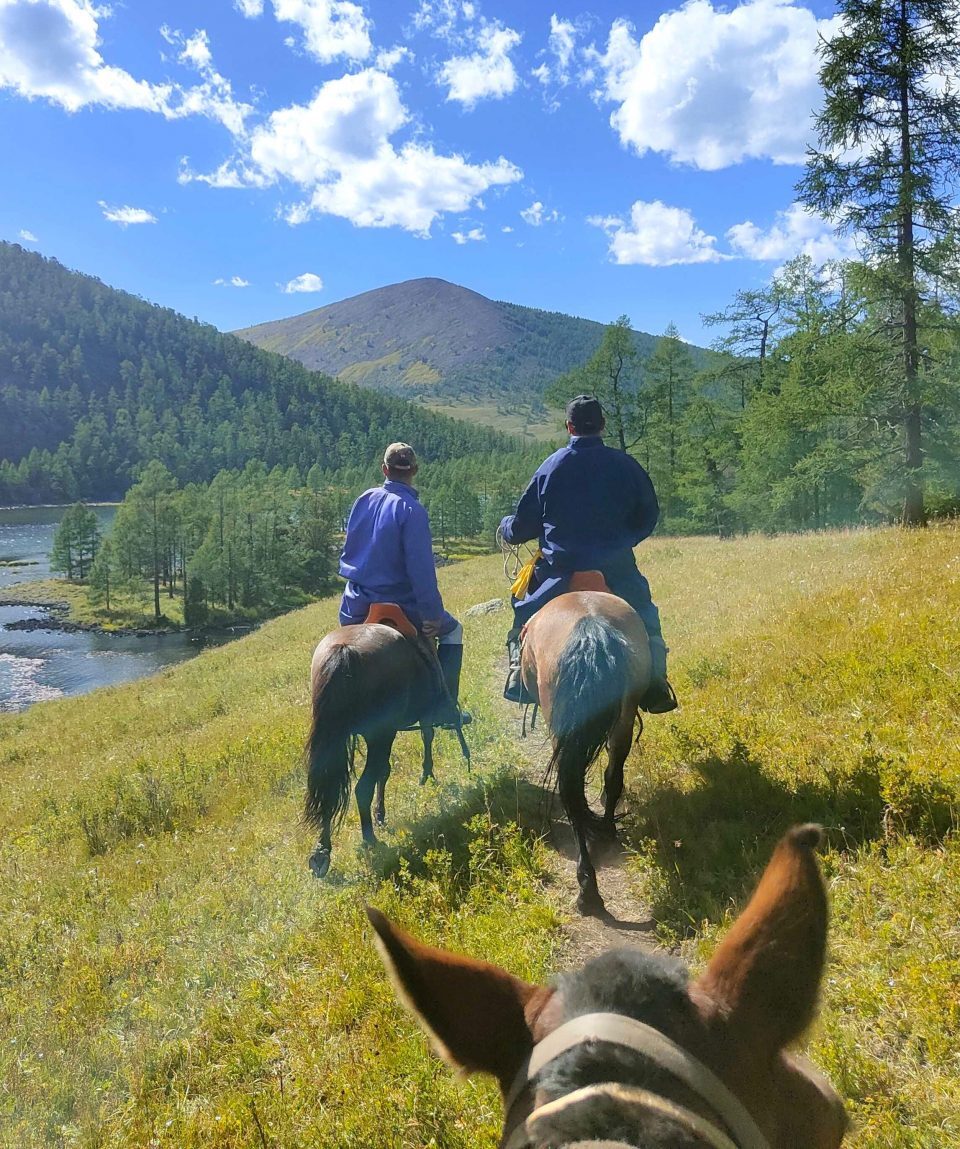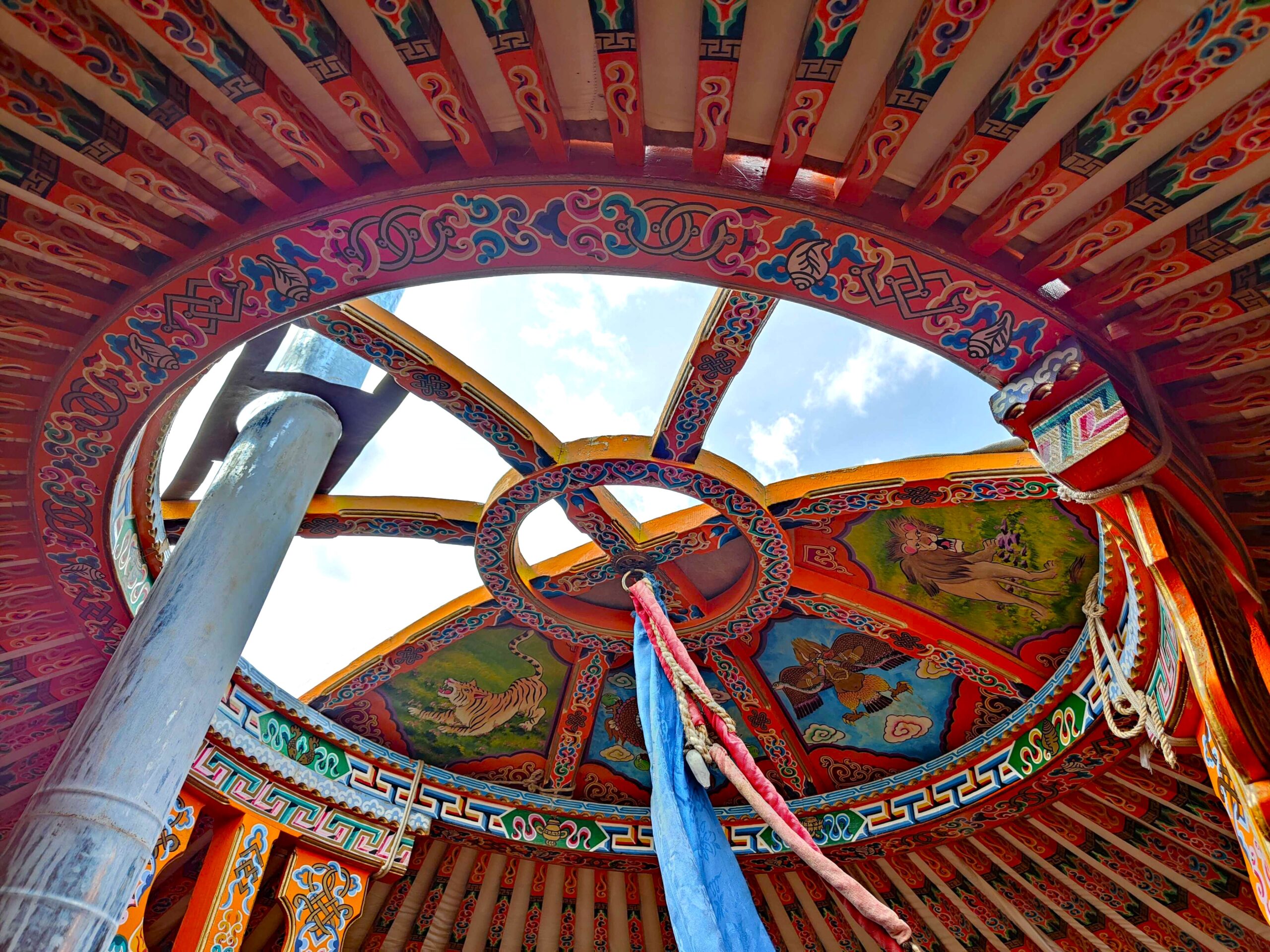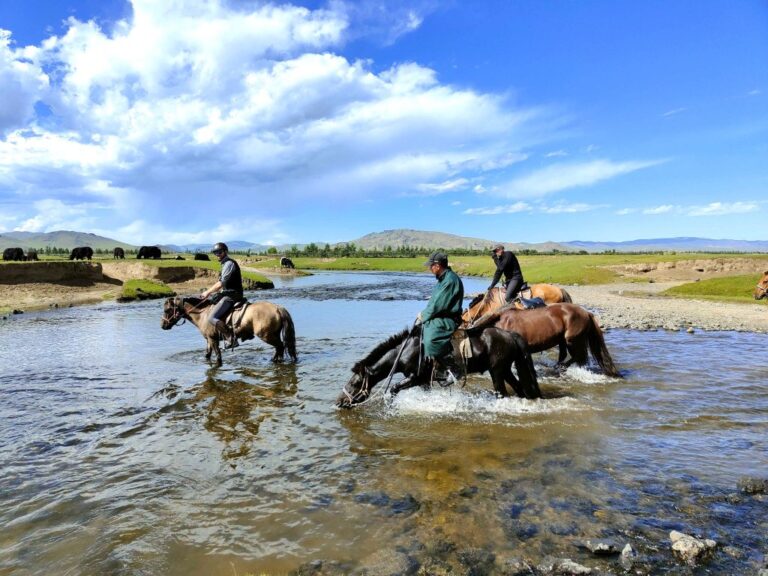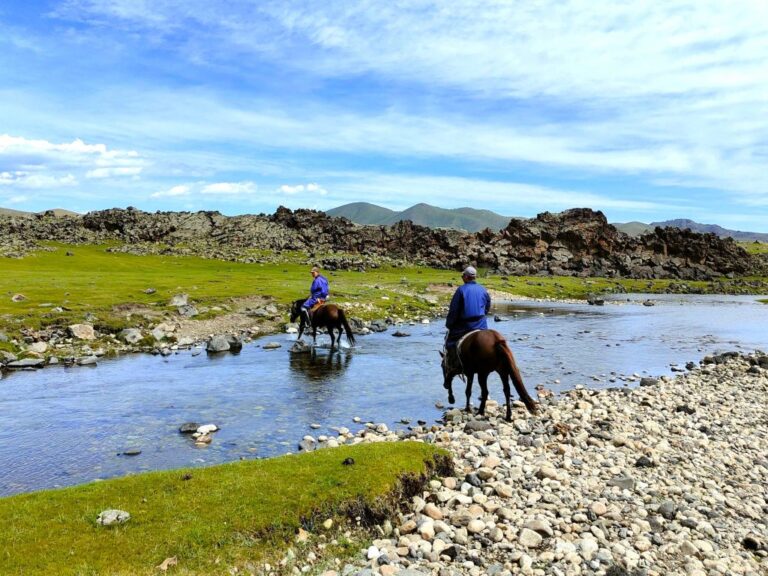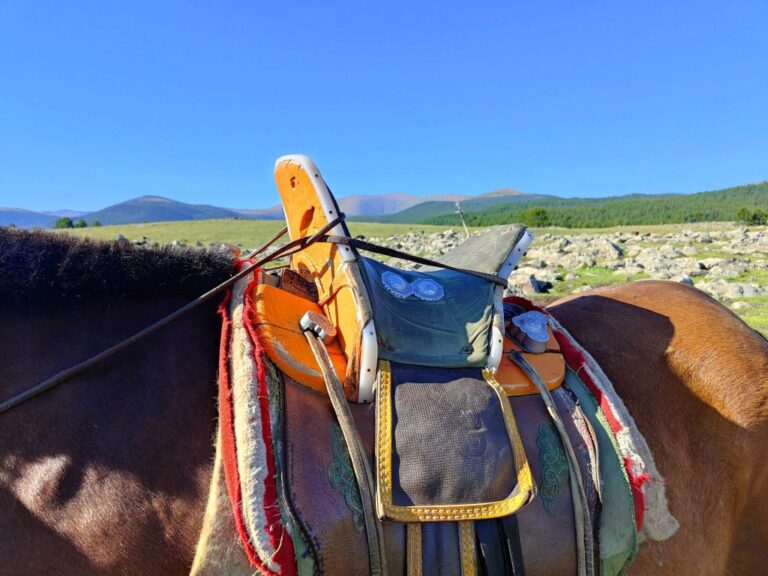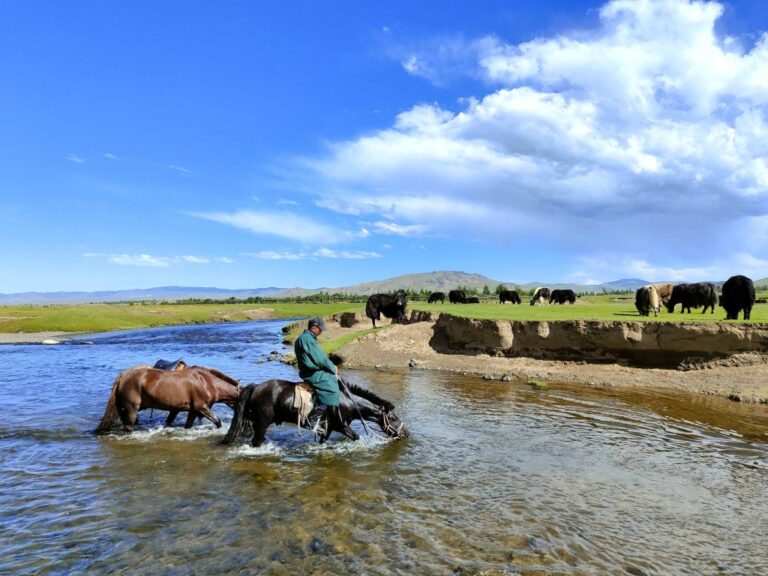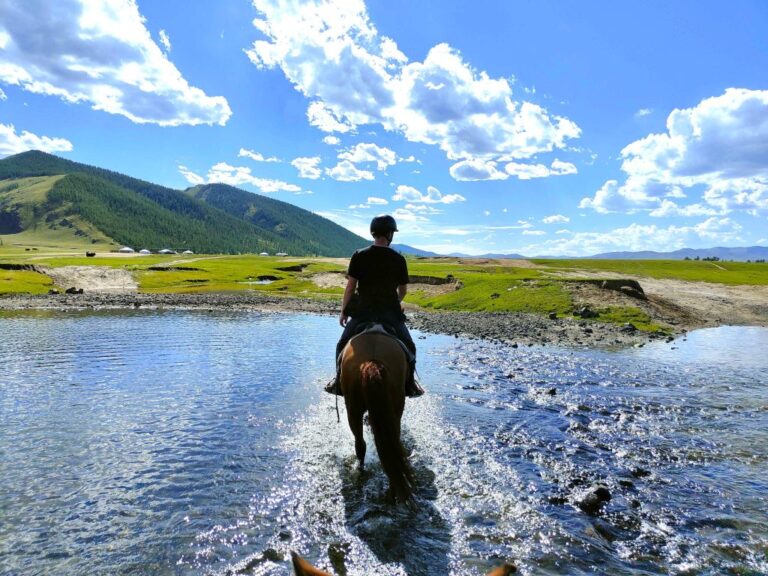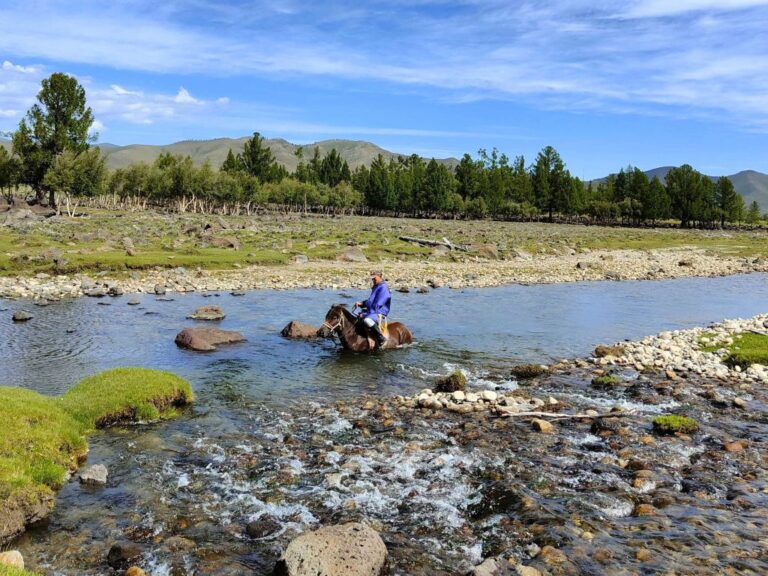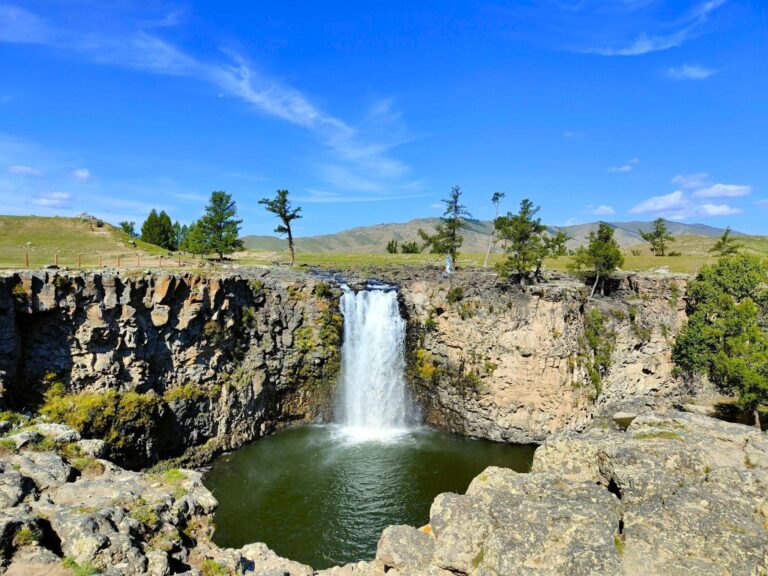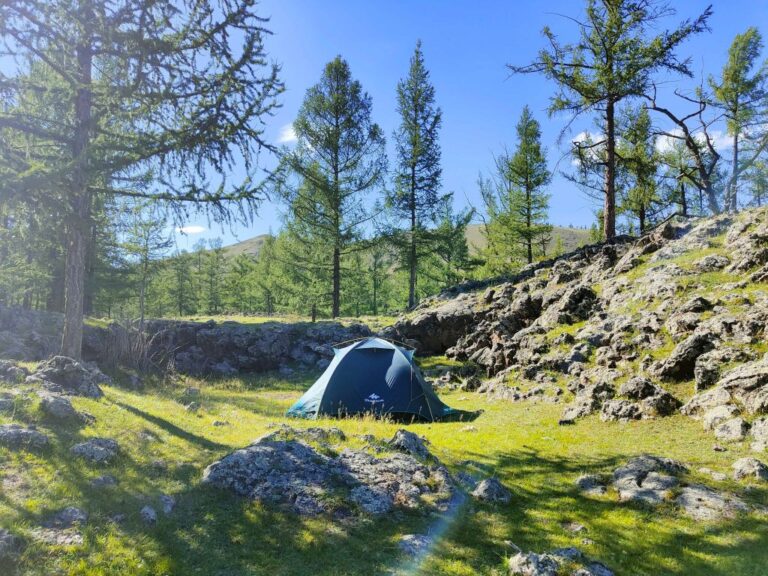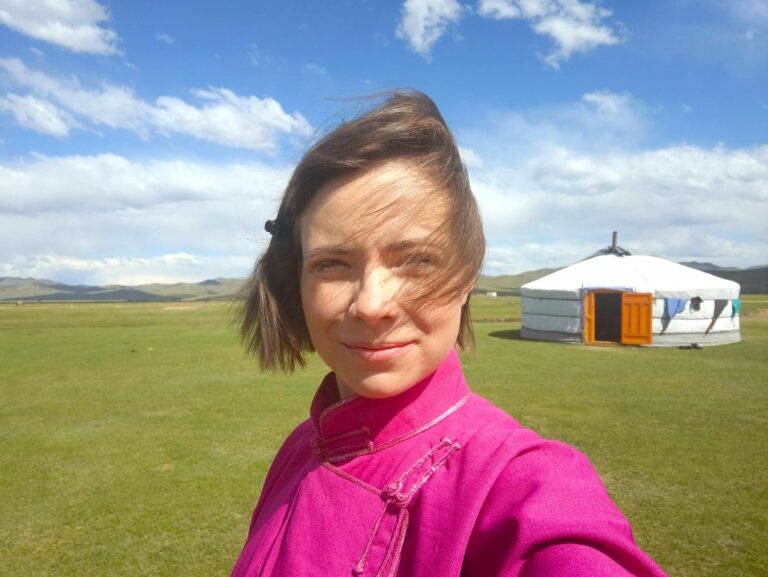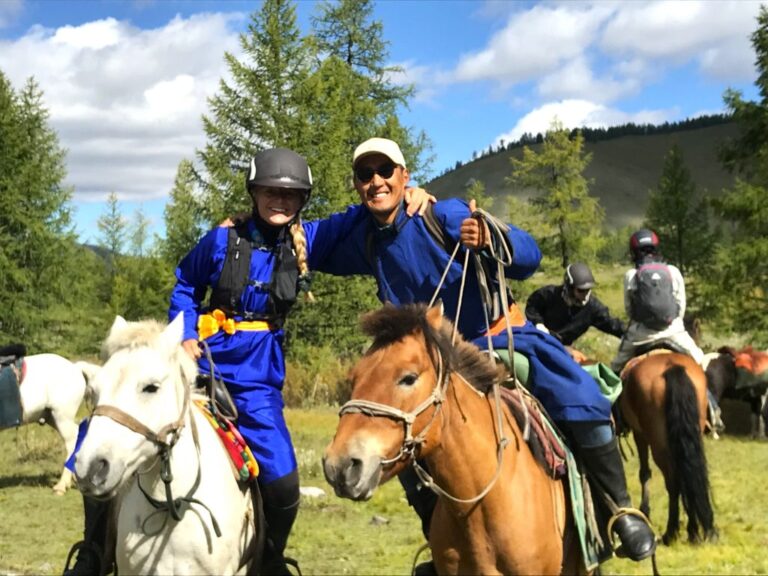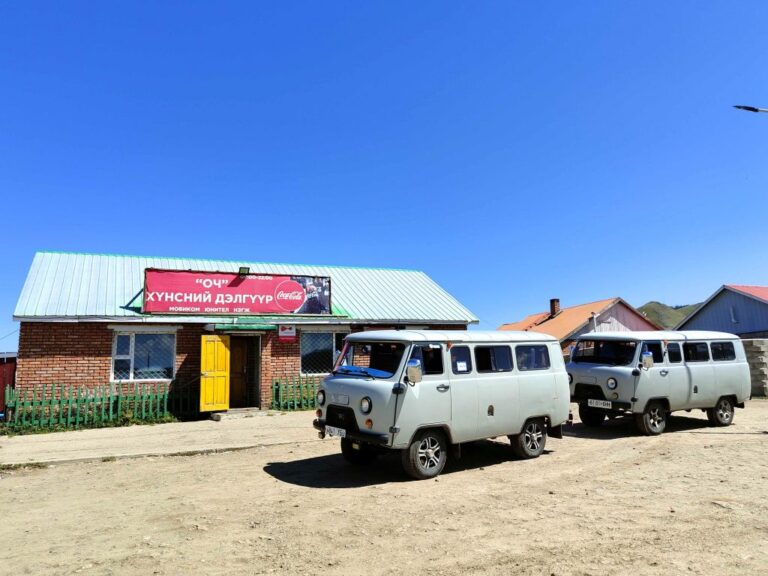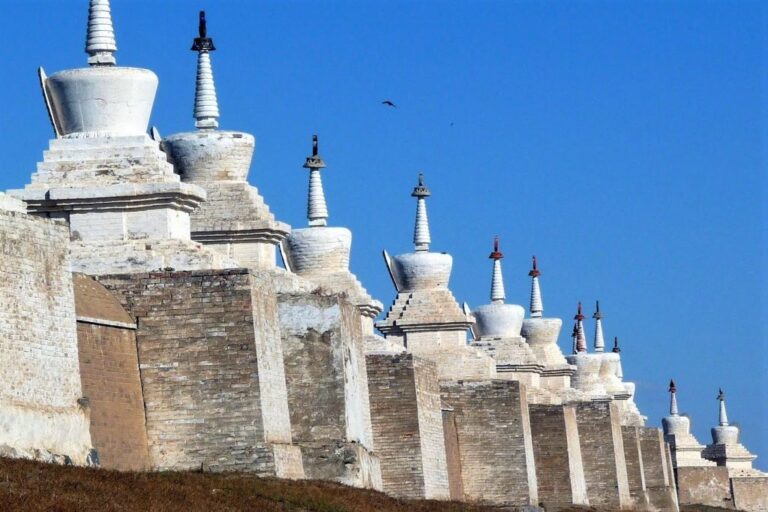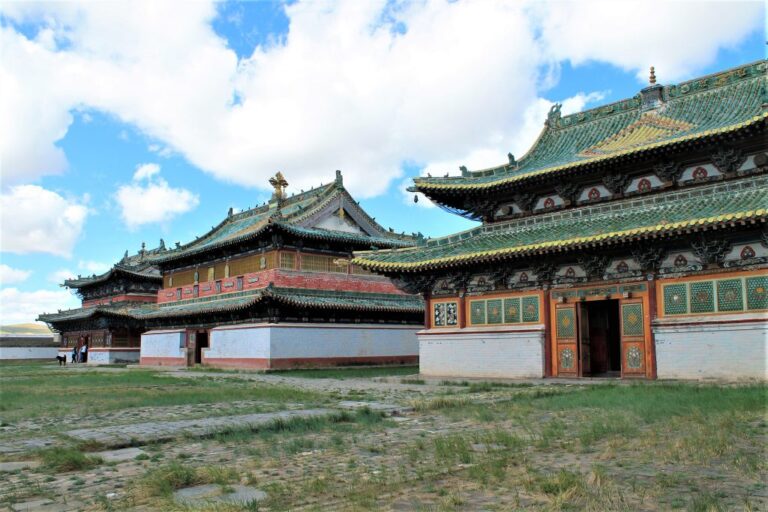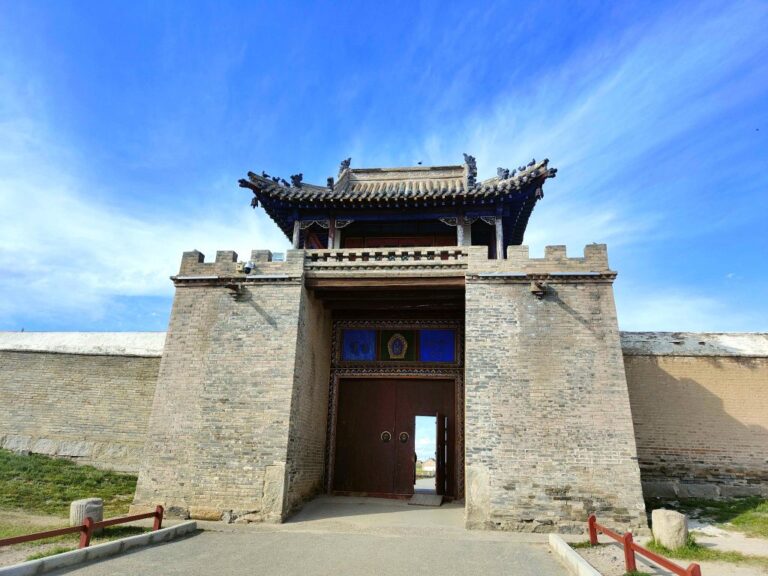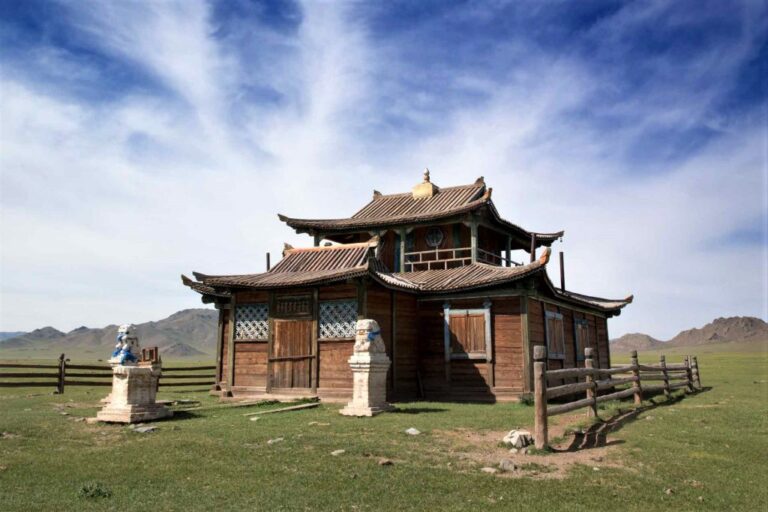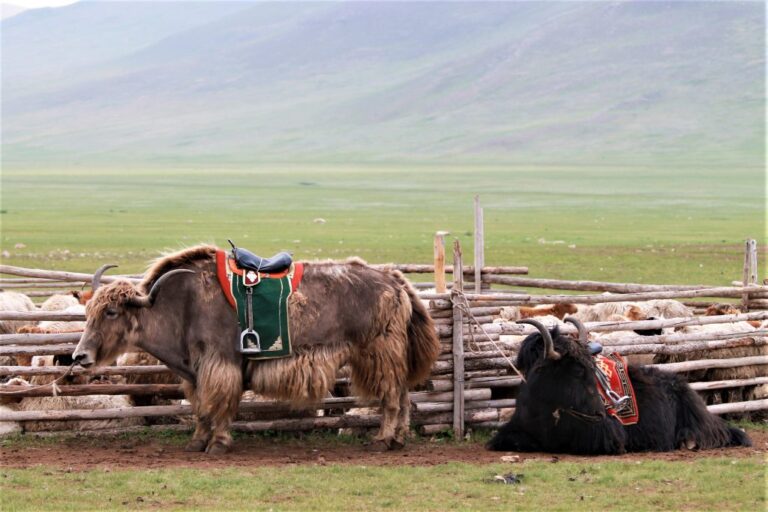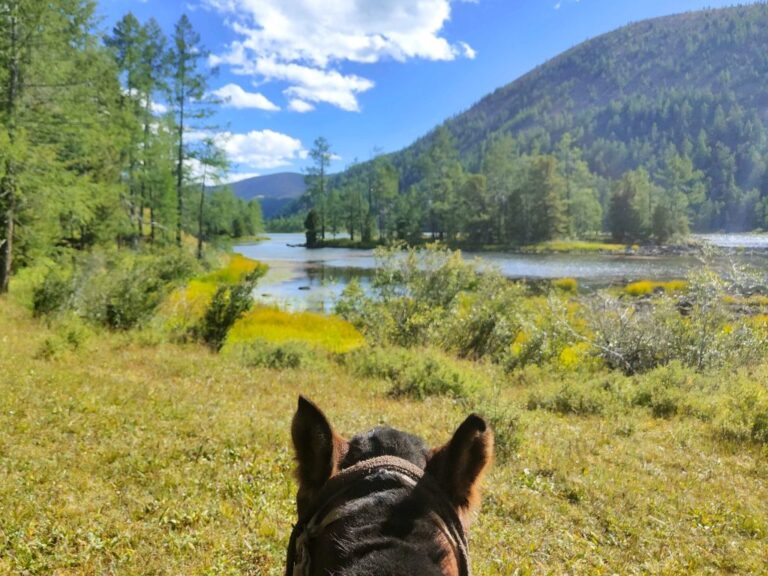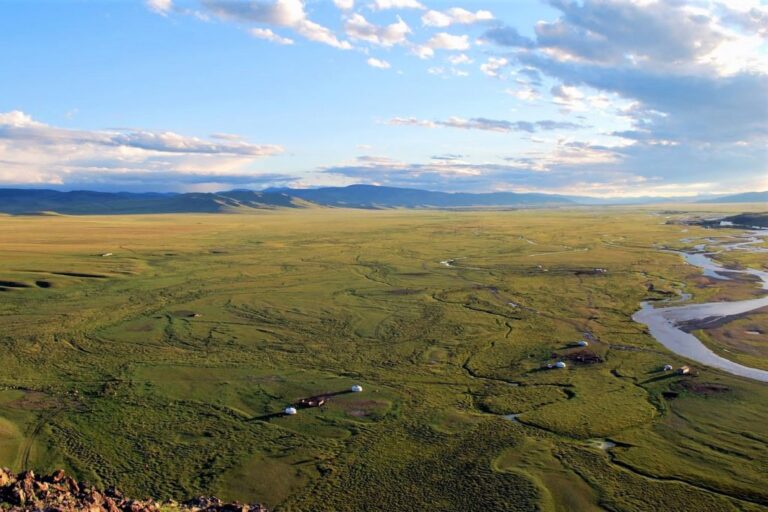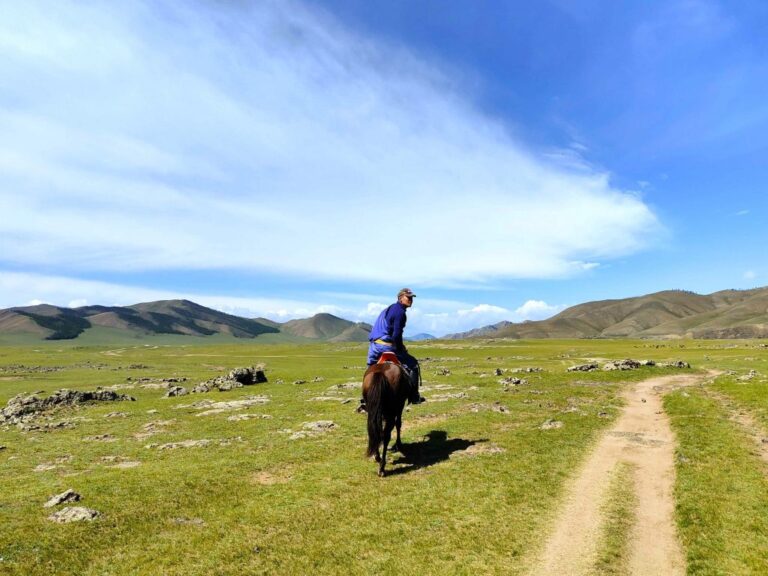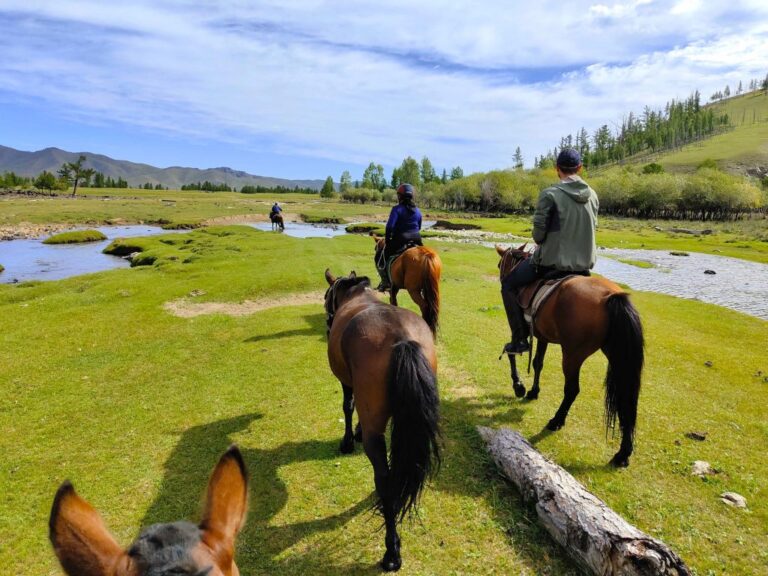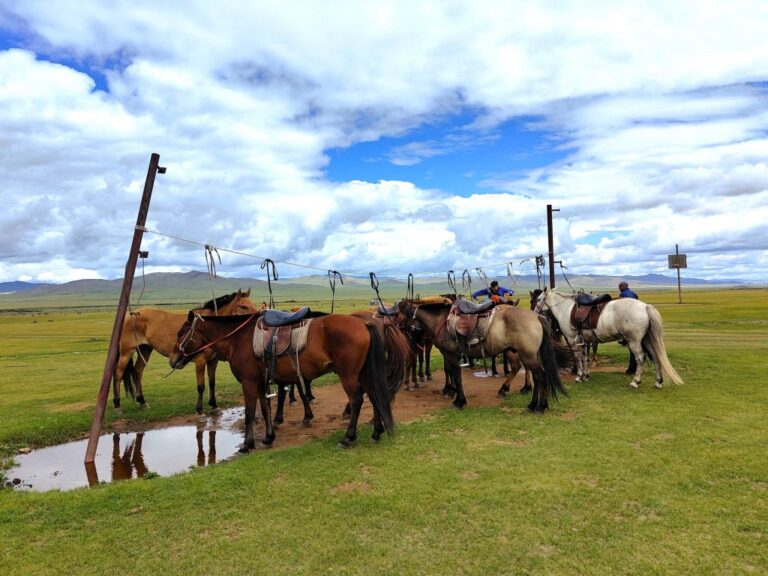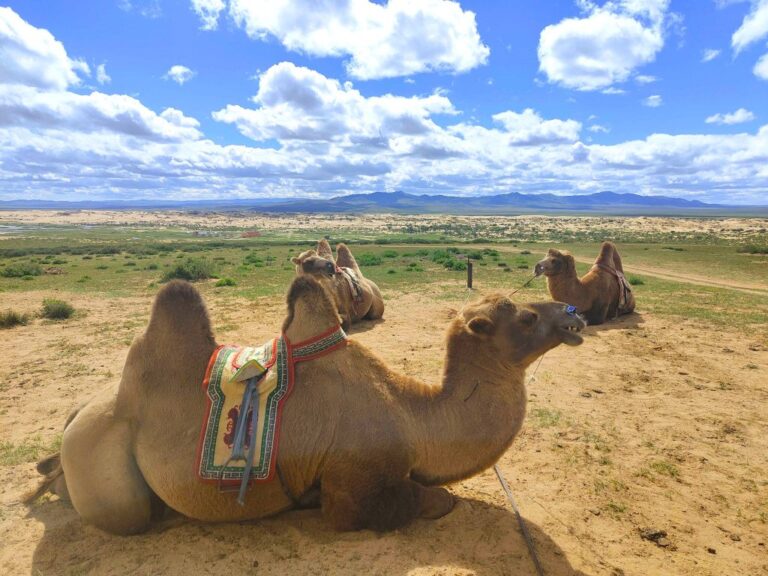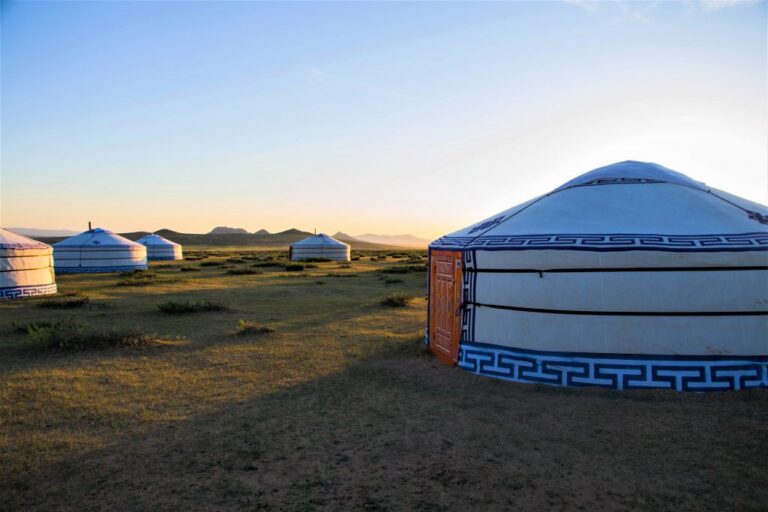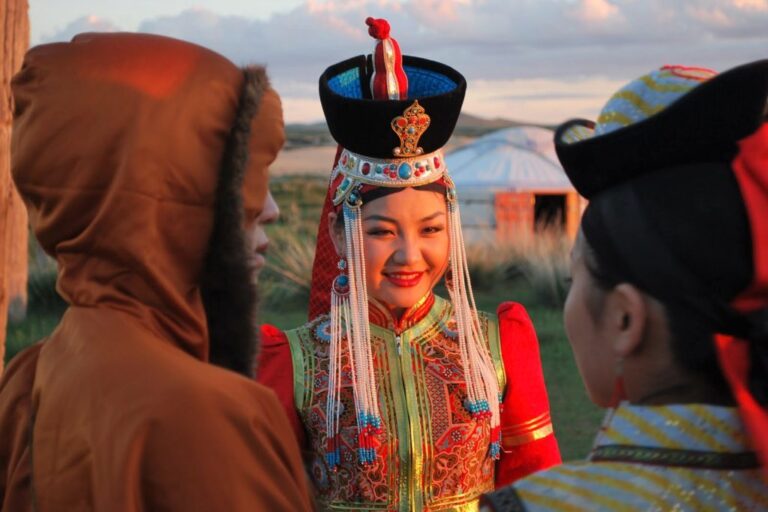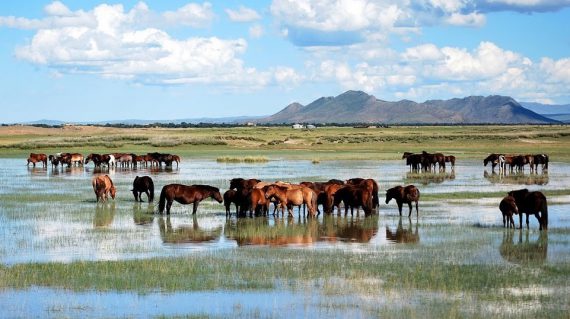
The Trail of Genghis Khan
Mongolia
The green grasses of the Great Steppe stretch far out to the horizon. However, an astute rider will easily spot herds of horses, cattle and sheep wandering near the ger. Not far to the West, the monumental peaks of the Khangay Mountains rise to the sky, and in their shadow grows a mysterious, larch-scented taiga. Horses are snorting quietly. We have come from the Karakorum, and we have a long way to go to the Mongolian Sands, also known as the Little Gobi Desert.
-
Days overall15 daysDays in saddle9 days
-
Group size12Available
-
Standardnomadic style (gers and tents)Luggageunlimited kgFoodlocal cuisine, limited vegetarian option
-
Skillswalk, trot, gallop
Mongolia, shrouded in legends, lays ahead of us! It was here that Genghis Khan, one of the most outstanding Nomadic commanders in the history of the world, warred and reigned. It is here that horsemen seem to be born in saddles, and horses are made to gallop through the immensity of green grass.
Our expedition is more than just a horseback trek. First of all, it is an experience of the extraordinary culture of the peoples of the Great Steppe, who have survived in the wild Mongolian backwoods until this very day. It is also a journey in the footsteps of the history of the great empire of nomads, which influenced the history of other lands in Asia and Europe for centuries. We will see the famous Karakorum. We will visit Buddhist monasteries. On top of that we will face breathtaking nature. We will admire steppe and pastures, mountains and canyons, lakes, rivers and waterfalls, and even a sandy desert. And we will set out on the trail of wild herds of Przewalski’s horses.
Most nights are spent in tourist tents, but ger accommodations are also planned. A ger is a felt-covered tent, West of the Altai popularly known as a yurt.
On average, we will spend about six hours a day in the saddle. The landscape is relatively flat and the pace of the ride is rather fast. We ride light-weight, without luggage. A support car assists us during the trip.
Due to the welfare of the horses, the weight of the rider should not exceed 95 kg.
- 2 nights at a hotel in Ulaanbaatar
- 4 nights in a ger
- 8 nights in tents
- All meals (excluding alcohol) except for meals in Ulaanbaatar
- Transfer from and to the airport in Ulaanbaatar (on the first and last day of the tour)
- All vehicle transfers provided for in the program (4×4 vehicles)
- Admission to all tourist attractions provided for in the itinerary
- Demonstration of traditional aliquot (throat) singing and dancing
- Assistance of a local, Eanglish-speaking guide
- Assistance of a European, Eanglish-speaking pilot
- Horse with full tack and equipment
- Camel ride
- Luggage car support
- Travel insurance that includes high-risk sports
- Flight tickets to and from Ulaanbaatar
- Meals in Ulaanbaatar
- Personal expenses (souvenirs, extra snacks, alcohol, etc.)
- Day 1 First steps in Mongolia
- Day 2 Karakorum
- Day 3 Orkhon River Valley
- Day 4 Waterfall
- Day 5 Footsteps of Zanabazar
- Day 6 Endless steppe
- Day 7 Roadless
- Day 8 Northern slopes of Changay
- Day 9 Taikhar Rock
- Day 10 Land of the shepherds
- Day 11 Chuluut Gol Canyon
- Day 12 In the shadow of an extinct volcano
- Day 13 Granite and sand
- Day 14 Przewalski's horses
- Day 15 The way home

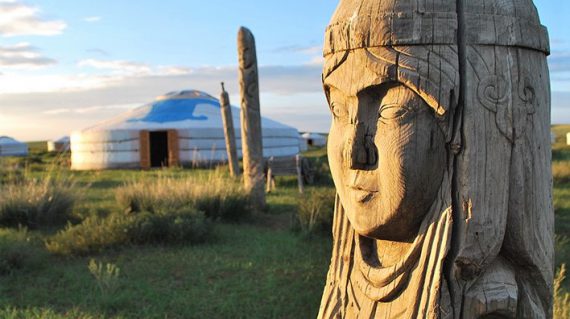
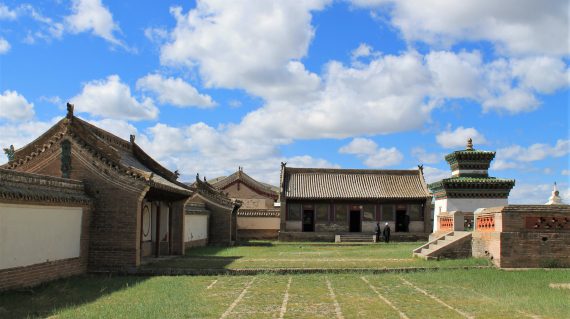
The expedition is organized comfortably and diversely – for a horse trek in Mongolia. In Ulaanbaatar we stay in a hotel. Outside the city, we spend nights in gers (Mongolian yurts) and tenting out. Each night we will have access to shower tents.
A detailed description of the accommodation standard for each day of the expedition can be found in the itinerary.
Meal preparation will be handled by – depending on the day – local housewives, our guides and cooks or in restaurants. Typical Mongolian cuisine is fatty, based on livestock products (meat and milk) – like most shepherd diets. During the tour, however, a vegetarian option is also available if needed.
All meals outside the city and breakfast in Ulaanbaatar are provided. Other meals in the Mongolian capital should be purchased on your own.
Equestrian equipment
In Mongolia we have English saddles, Russian stock saddles or local steppe saddles available. If possible, we will try to match riders’ saddle preferences, but the priority will be to fit the horse according to height and weight. We use horse bits.
Riding outfits must be adapted to the climate of the Great Steppe. Daytime temperatures can be as high as 25 degrees Celsius, but there are occasional passing storms, rain, and fog. In the evenings the temperatures drops, riders should pack and prepare for variuous and changing conditions. Waterproof outerwear is also something you’ll need. Instead of typical riding / jodhpur boots we recommend trekking boots, most definitely waterproof. It’s also a good idea to bring a scarf/tube scarf or a buff to protect your face from dust on dry days.
What should you bring?
We are supported by a 4×4 vehicle when touring in Mongolia. There is no weight limit for luggage.
- passport
- cash, preferably USD or EUR
- electronic equipment, e.g. camera, powerbank
- flashlight, preferably a headlamp
- sunscreen
- sunglasses
- raincoat
- swimsuit (optional for lovers of swimming in rivers)
- trekking boots
- knife or pocket knife
- reusable canteen or water bottle
- sheet/sleeping bag liner (optional)
Our partner provides free on-site sleeping bags that are washed and disinfected after each trip.
